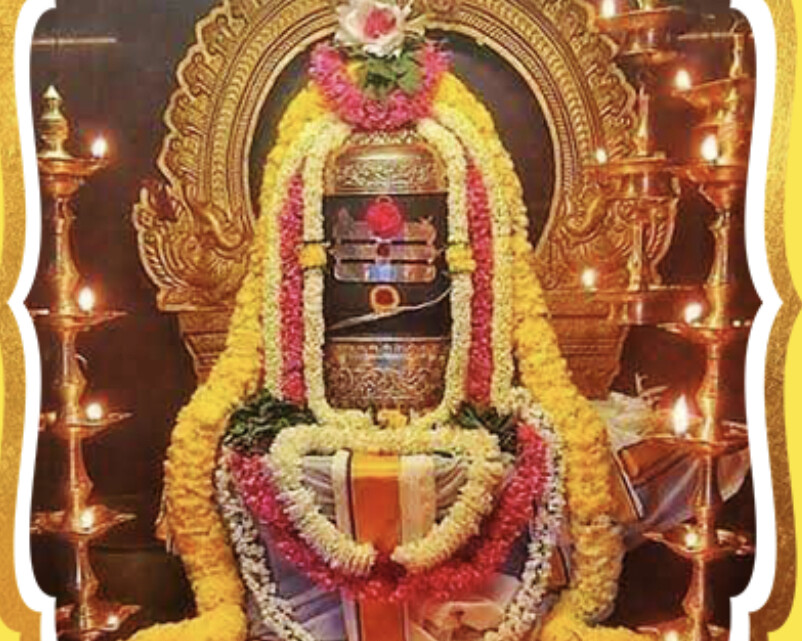Rameswaram Jyotirlinga, also known as Ramanathaswamy Temple, is located on the island of Rameswaram, off the southeastern coast of Tamil Nadu, India. This temple is one of the twelve Jyotirlinga temples, where Shiva is worshipped as a Jyotirlingam, or “pillar of light.”
Importance of Rameswaram Jyotirlinga
Rameswaram Jyotirlinga temple has a rich historical and mythological significance in the Vedic sphere. It is traditionally considered to be the place where Lord Rama, an avatar of Vishnu, prayed to Shiva to absolve any sins that he might have committed during his war against the demon king, Ravana, in Sri Lanka.
To worship Shiva, Rama wanted the largest lingam and directed his monkey lieutenant Hanuman to bring it from the Himalayas. As it was taking longer, Sita, Rama’s wife, built a small lingam, which is believed to be the one in the sanctum of the temple. This is called Ramalingam, and the one brought by Hanuman is called Vishwalingam. Rama instructed that Vishwalingam should be worshipped before Ramalingam, and this tradition continues even today.
The temple, known for its grandeur, is also significant for its long ornate corridors, towers, and 36 theerthams (water bodies used for sacred ablution). The structure was built during the 12th century by Pandya Dynasty, and later additions were made by various rulers over centuries.
It is also one of the four holy places a Hindu is expected to visit in their lifetime (Char Dham), with the other three being Badrinath in the North, Puri in the East, and Dwarka in the West. The journey is said to help a person attain salvation or moksha.
Process and Significance of Rameswaram Jyotirlinga Homam
The Rameswaram Jyotirlinga Homam is a revered ritual dedicated to Lord Shiva. This Homam is carried out to invoke the blessings of Lord Shiva, overcome obstacles, and eliminate negative energies. By performing it, devotees believe they can achieve spiritual enlightenment and attain wealth, prosperity, and longevity. The ritual also serves to absolve sins, alleviate ancestral curses, and lessen the adverse impacts of planetary positions in one’s horoscope.
The procedure of the Homam begins with Ganesha Pooja, which is performed to remove any hurdles, followed by Punyahavachanam, a ritual to purify the surroundings. The main part of the ceremony involves invoking Lord Shiva in the form of Jyotirlinga at Rameswaram and conducting the fire ritual accompanied by the chanting of Vedic mantras. During this, the priest or the person leading the Homam offers various items into the sacrificial fire, such as ghee, grains, fruits, and flowers. This offering stage is called ‘Ahuti’ or ‘Havan.’ The ritual culminates with the Poornahuti, signifying the end of the offerings, after which Aarti is performed, and Prasad is distributed among the attendees. As a part of the ritual, some devotees also carry out the ‘Pinda Daan’ at Agnitheertham, a sacred spot near the temple, as a tribute to their ancestors.
Boons of Rameswaram Jyotirlinga Homam
The Rameswaram Jyotirlinga Homam is believed to bring numerous boons or blessings to the devotees. It’s seen as a pathway to the blessings of Lord Shiva, aiding in overcoming obstacles and eliminating negative energies. The ritual can guide a person towards spiritual enlightenment and material prosperity. It’s said to grant longevity and improve overall wellness. By performing this Homam, a devotee can cleanse their sins, gain relief from ancestral curses, and reduce the negative effects of planetary positions in their horoscope. In essence, this ritual showers protection, peace, and harmony in one’s life and within the family, leading to a fulfilled and balanced existence.
If you wish to get all the above boons, connect with us. We will organize Rameswaram Jyotirlinga Homam for you. We have the best priests and other incredible arrangements. Connect and get incredible benefits!

















